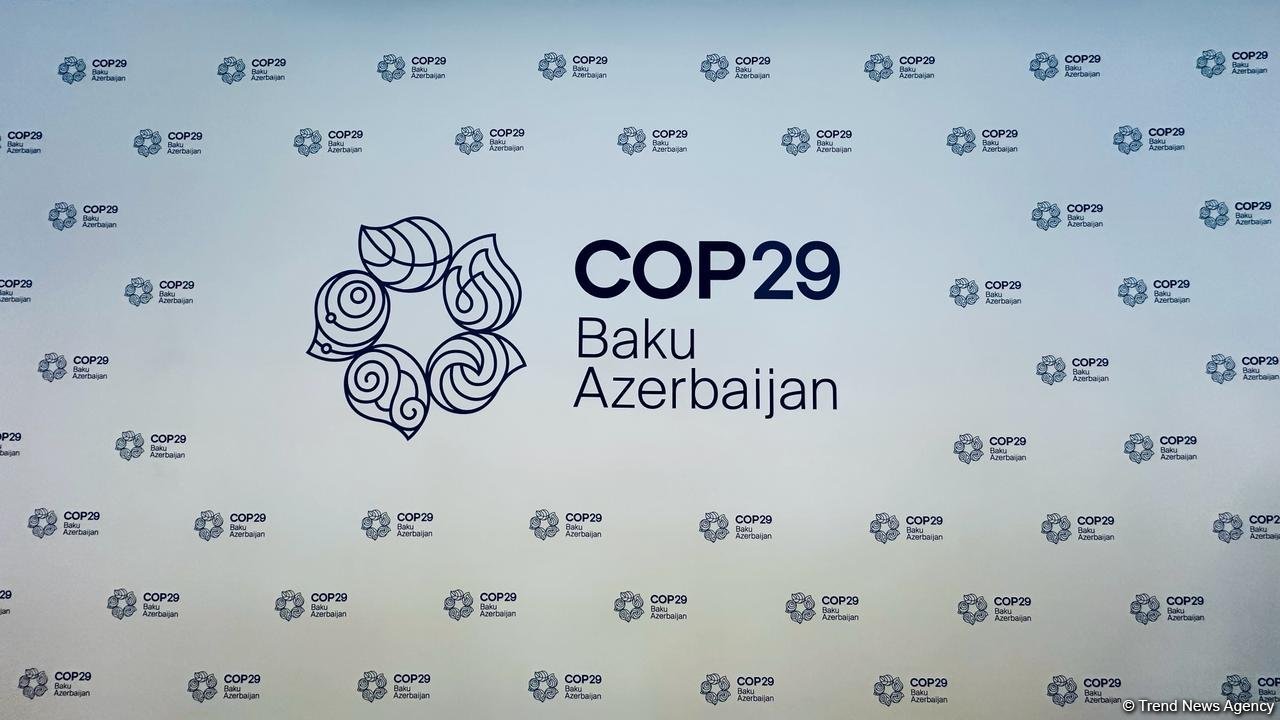BAKU, Azerbaijan, August 6. The Conference of the Parties (COP) is a key international event on climate change, held under the auspices of the United Nations Framework Convention on Climate Change (UNFCCC).
The first COP was held in 1995 in Berlin, and since then, these annual meetings have gathered representatives from governments, international organizations, and civil society worldwide.
At the COP, participating countries evaluate global efforts to achieve the Paris Agreement's primary goal of limiting global warming to 1.5 degrees Celsius. The meetings focus on decisions regarding the reduction of greenhouse gas emissions, adaptation to climate change impacts, financing for vulnerable countries affected by natural disasters, and support for countries transitioning to green economic models through finance, technology, and capacity building.
What are the main goals and tasks of COP?
COPs are held to coordinate global efforts to combat climate change. The primary objective is to assess and advance initiatives to reduce greenhouse gas emissions and adapt to the impacts of climate change. The conferences also address financing for vulnerable countries suffering from climate-related disasters like floods and droughts. In addition to developing new strategies, COPs provide crucial support for those most affected by climate change.
Why are COPs important?
COPs play a crucial role in the fight against climate change. At these meetings, governments from around the world discuss and agree on measures to reduce greenhouse gas emissions and adapt to the changing climate. These conferences also raise awareness of climate risks and ensure the essential participation of the private sector, civil society, and industry in addressing the climate crisis. As UNFCCC Executive Secretary Simon Stiell emphasized, "Every decade of global warming matters. Every year matters. Every decision matters. Every COP matters."
What are greenhouse gases?
Greenhouse gases, such as CO2, methane, and sulfur dioxide, are natural gases that trap heat on Earth, similar to how a greenhouse retains warmth to support plant growth in cold climates. According to NASA, without these gases, Earth's average temperature would be around 0°F (-18°C) instead of the current 59°F (15°C). Since the Industrial Revolution in the mid-1700s, human activities, particularly the burning of fossil fuels, have significantly increased the concentration of greenhouse gases in the atmosphere. CO2, which is responsible for about three-quarters of global warming, can remain in the atmosphere for thousands of years.
Path to 1.5°C
Since the start of the Industrial Revolution, the average global temperature has increased by about 1.2 °C. Most scientists agree that a 1.5°C increase marks a critical threshold, beyond which the effects of climate change become increasingly dangerous and irreversible. The pathway to 1.5°C refers to efforts aimed at limiting global temperature rise to this level. At COP26 in 2021, governments committed to focusing on the 1.5°C pathway, shifting away from the less stringent 2°C target set in the Paris Agreement of 2015.
What is zero emission?
Zero emissions of greenhouse gases are achieved when the amount of carbon emitted annually equals the amount of carbon removed from the atmosphere. According to the Intergovernmental Panel on Climate Change (IPCC), the pathway to zero emissions involves both decarbonization and carbon removal. Decarbonization refers to reducing emissions by decreasing reliance on carbon-intensive fossil fuels, while carbon removal solutions aim to extract carbon from the atmosphere and store it long-term.
Kyoto Protocol and Paris Agreement
The Kyoto Protocol, ratified in 1997, is a landmark international treaty where signatories committed to reducing greenhouse gas emissions to mitigate human impact on the climate. This treaty, which emerged from COP3, is one of the most significant outcomes of COP meetings.
The Paris Agreement, concluded in 2015 at COP21, is another pivotal international treaty. In Paris, participants agreed to limit global temperature rise to 2°C, with an aspirational goal of staying within 1.5°C. The agreement requires each country to monitor, record, and report its carbon emissions, as well as its efforts to reduce and offset them.
How does COP interact with other international organizations?
COP actively engages with various international organizations, including the World Food Programme (WFP), the Food and Agriculture Organization of the United Nations (FAO), and the International Fund for Agricultural Development (IFAD).
COP collaborates with WFP to address the impact of climate change on food security, providing resources and expertise for projects that enhance climate resilience in rural communities. With FAO, COP integrates climate initiatives into agricultural practices, developing strategies and programs that help countries adapt to changing climate conditions and improve agricultural resilience. IFAD partners with COP to finance and support projects aimed at increasing the climate resilience of rural communities, offering financing and technical assistance for implementing climate-resilient agricultural practices.
Additionally, COP works with the World Bank, which provides financial and technical support for climate projects in developing countries, assisting these nations in developing and implementing strategies to reduce emissions and adapt to climate change.
Collective commitments and joint action
Over the years, COP conferences have made significant progress in fostering international cooperation and advancing climate commitments.
Some key collective commitments and joint actions adopted at the conferences include:
Flexibility mechanism (COP3, 1997): Under the Kyoto Protocol adopted at COP3, countries committed to reducing their greenhouse gas emissions by 5 percent below 1990 levels between 2008 and 2012. This agreement marked one of the first global commitments to reduce emissions under the UNFCCC.
Global climate finance goal: At various COP conferences, participating countries agreed to mobilize $100 billion annually to support developing countries in their efforts to combat climate change. COP29 will discuss raising this funding target to $150 billion.
Loss and damage programs: At COP27, a special fund was established to compensate developing countries for loss and damage caused by climate disasters such as floods and hurricanes.
Zero emissions initiative: At COP26, parties to the agreement committed to a global initiative aimed at achieving zero carbon emissions within the next decade.
COP29: Global significance for future generations
COP29 is crucial for securing a sustainable climate future for generations to come. As highlighted by the World Economic Forum, COP29 serves as a vital platform for developing specific actions and commitments to combat climate change and safeguard ecosystems that will shape the planet’s climate for future generations. The conference underscores the need for urgent and decisive action to ensure a sustainable climate.
To note, the 29th session of the Conference of the Parties to the UN Framework Convention on Climate Change (COP29) will take place in Azerbaijan in November this year, as decided at the plenary meeting of COP28 in Dubai on December 11 of the previous year.
Stay up-to-date with more news at Trend News Agency's WhatsApp channel







